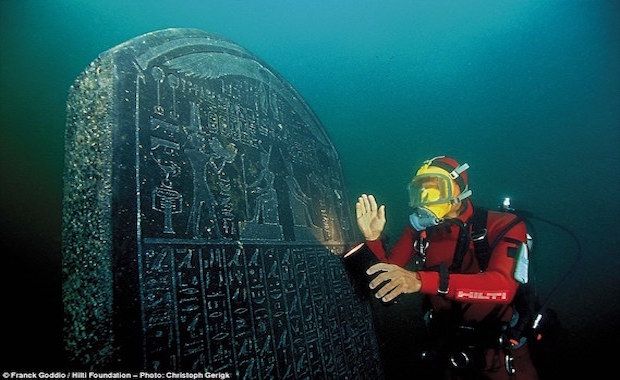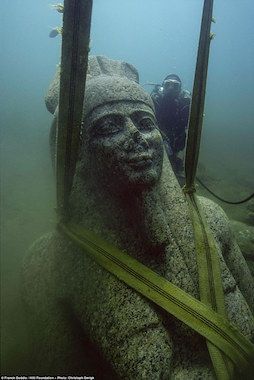Advertisement
Egypt’s Lost City Of ‘Atlantis’ Comes To Life
| By Margo Gothelf
Advertisement - Continue reading below

An enormous display of lost and sunken artifacts will come together for a huge exhibit next year in the British Museum, the Daily Mail reported Tuesday. The artifacts will come from the sunken city dubbed the “Atlantis of Egypt.”
The treasure, which belonged to cities Heracleion and Canopus, were found underwater trapped below three meters of silt. Ancient texts have shown records of the existence of the treasure, yet it was not until 1996, when divers stumbled upon the fortune that it was unearthed. Since then, the divers have spent nearly two decades excavating them out of the deep waters.

Highlights of the exhibit will include a hieroglyphic tablet inscribed with a declaration from the Pharaoh Nectanebo and a statue of Hapy, the Egyptian god who embodies the Nile’s floods. A total of 300 items will be put on display.
According to the Daily Mail, “the exhibition will focus on the mingling of cultures in the Nile delta cities, particularly the interaction between Egypt and Ancient Greece.” Other exciting features of the exhibit will include a statue from Arsione II, a queen from the Ptolemaic dynasty.
Frank Goddio, the president of the European Institute of Underwater Archaeology and co-curator of the exhibit shared his excitement with the Daily Mail.
“My team and I, as well as the Hilti Foundation, are delighted that the exhibition with discoveries from our underwater archaeological expeditions off the coast of Egypt will be on display at the British Museum. It enables us to share with the public the results of years of work at the sunken cities and our fascination for ancient worlds and civilizations.”
The exhibit, named “Sunken Cities: Egypt’s Lost World,” will open May 2016 and run until November. It will be the first time artifacts from both the British Museum and archives on special load from Egypt will be put on display together.

Advertisement - Continue reading below
Share
On Facebook
